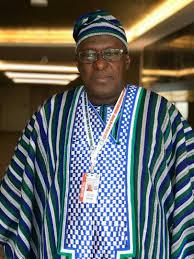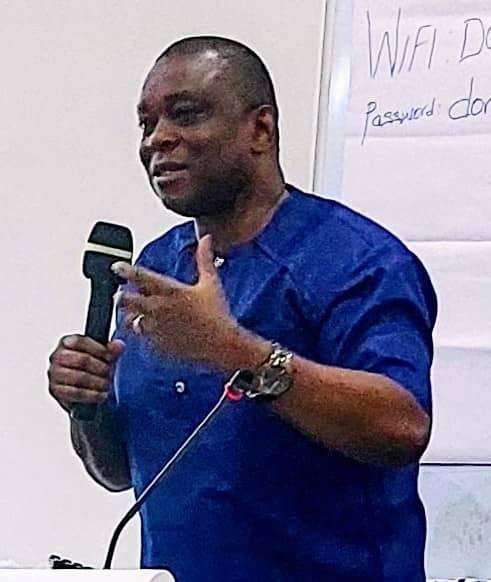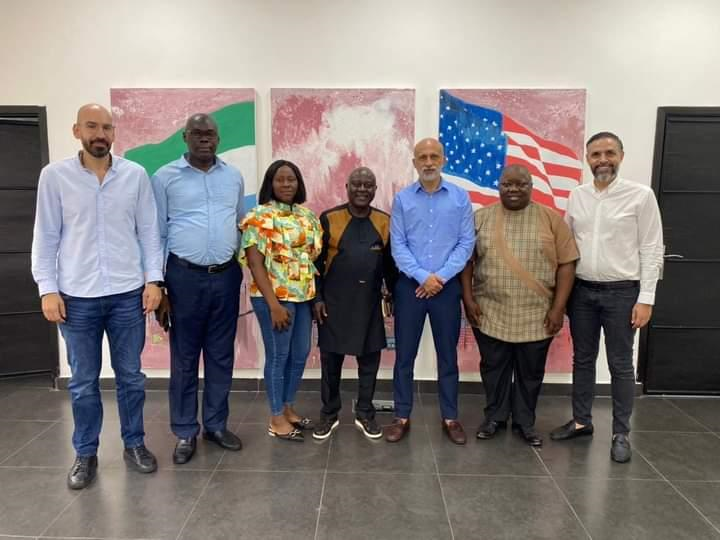Maintaining the trajectory
Sierra Leone is at a crossroads, especially so within the last 58 months given the progress that this small West African state, with less than seven million people, has continued to score in a number of areas. Looking at the country’s history and juxtaposing that to current happenings, especially from the viewpoint of development it is but prudent to submit that we are a progressing nation, one that is bound to reach some sort of socio-economic and political apex of development. With a tropical and humid climate, with so many natural resources like rutile, diamond, gold, petroleum and rich offshore fishing among others, Sierra Leone continues to showcase herself as an investment friendly nation. (Photo: Pa John Baimba Sesay, IA, China)
Sierra Leone’s Truth and Reconciliation Commission believes “… years of bad governance, endemic corruption and the denial of basic human rights created deplorable conditions that make conflict inevitable…” But thank God, we today have taken a path that is different from the one referred to by the TRC. And thanks to our efforts as a people, more so when we came to realize the need to put aside aide a rebel war that lasted for decade and saw the need to concentrate on fostering our development agenda.
The direction that Sierra Leone has taken especially in the last five years is one that we should endeavor to maintain. The path of economic growth, infrastructural development, the conduit of an improved health sector should be sustained and maintained. We have not reached the destination we have been moving towards, but there are glaring indications, that with the astute leadership that we have kept getting through the present government, we are sure of overcoming the literally bumpy road blocks alone the road to prosperity. We still can afford President Koroma more time to do what best he can do for us.
In the past few weeks, I have been highlighting the growth that we have encountered in the areas of agriculture, infrastructure and human right. I also recently dealt extensively with the achievements we have scored as a country in the aspect of locally raising revenue for the smooth running of the affairs of the state, through the National Revenue Authority and also, I have attempted to relate all of these developments, especially given our desire to overcome the challenges facing us as a post war nation. The fact should be stated over and again, that all what we have continued seeing in terms of our development drive do have a great bearing the political will and commitment of the present government of President Ernest Bai Koroma, coupled with the outstanding performance of our Ministers, Heads of Parastatals and other government departments.
Our growth in recent years also had to do with the judicious use of not just donor funds but our resources as well. Our resource potential as a nation cannot be overemphasized. Take our minerals as a practical case point. We know that there was a ban imposed in 2000 which was aimed at attempting to prevent diamonds from being used to finance the RUF in pursuit of the war. But by 2003, June, the said ban lifted and this was in light of the government’s increased efforts to control and manage the diamond industry and its participation in the Kimberley Process. By 2003 Sierra Leone mined and legally exported approximately US$76m worth of diamonds from alluvial fields and these figures reached a total of US$126m in 2004 and increased to US $ 140 by 2005.
Now, put those figures behind you and also attempt to look at the aspect of foreign aid to Sierra Leone during the Kabba (h) era. The amount of aid we got from development partners, especially following the end of our civil war in 2002 was extraordinarily great. For instance, by December 6th of 2004, the British High Commissioner to Sierra Leone Dr. John Mitchiner and the then vice president Solomon Berewa signed a 25 million Pound Sterling grant agreement, which was expected to “support the government of Sierra Leone in its efforts to improve the safety, security and access to justice for the people. It will also to support the development of an effective and accountable justice sector, capable of meeting the needs and interests of the people of Sierra Leone, particularly the poor…”( http://business.highbeam.com/3548/article-1G1-125881731/sierra-leone-judiciary-receives-25-million-pound-sterling) . By June of 2005 the Executive Board of the International Monetary Fund (IMF) was in Sierra Leone to complete the sixth and final review of Sierra Leone’s performance under an SDR 130.8 million (about US$194.3 million) Poverty Reduction and Growth Facility (PRGF) arrangement. Also, in addition, the Board approved additional interim assistance of SDR 4 million (about US$5.9 million) under the enhanced Heavily Indebted Poor Country (HIPC) Initiative for the period until end-2005. (http://business.highbeam.com/3548/article-1G1-132975480/imf-executive-board-completes-sixth-and-final-review). With all of these figures, the question you will like to ask is how judiciously they were used for the socio-economic development of the country. In fact given the poor and very unacceptable way that donor funds were been utilized by the then government, prior to the 2007 elections, the donor community was left with no option but to withhold funds to Sierra Leone.
This was the state of affairs that President Ernest Bai Koroma inherited. But his election in 2007 saw a new path of development, a new route that has today ensured, development funds, given by the international community are judiciously utilized for the common good of the poor people in Sierra Leone. Progress in supply of energy and power is one of indicators of the successes of President Koroma’s five years governance.
It reached a point when Sierra Leone was the darkest city in the sub region, with university students figuratively shouting on rooftops whenever there was a glimpse of electricity that would last for not more than a day. But by 2009, President Koroma spoke of his conviction that “the multiplier effect of adequate and reliable energy will impact on all sectors of the country and revitalize the economy and improve the standard of living of our people.” And by the same year during the Trade and Investment Forum he spoke thus; “To power our economic development without harming the environment, we are committed to harnessing the enormous hydro-electric potential in our rivers and waterways, as well as to developing biofuels and solar energy. The recently completed Bumbuna hydro-plant is our first step towards this clean energy future…” and during the commissioning of the Regent Station also in 2009 he said, “In the energy sector, we set out to achieve the supply of reliable power to Freetown, the completion of the Bumbuna Hydroelectric Project, the development of new power sources throughout the country and enhanced transmission and distribution networks.”
Electricity for Freetown and all provincial towns was identified as one such immediate priority, while following up on arrangements toward a longer term sustainable provision, including the completion of the Bumbuna Hydro project. Realistically what we see today is an increase in the national electricity generation capacity with a target of 218MW by 2013. Also, a program that is geared towards the electrification of provincial towns and cities has commenced with the installation of new thermal plants and this is expected to cover Kabala, Bo, Makeni, Bonthe, Pujehun, Port Loko, Moyamba, Kambia, Lungi, Kailahun, Magburuka, Koidu and Kenema. The country has also commenced construction works for Mini-hydro projects at Bankasoka (2MW), Charlotte (3MW) and Makalie (170Kw) – with preparations on-going for the others at Yele (500Kw) and Moyamba (11MW). Preparations for the expansion of the Bumbuna Hydro system (Bumbuna II) to 400MW are also ongoing, with government also having secured an agreement with ADDAX to build a biomass plant producing up to 30 MW of electricity from the biogases. There has also been the introduction of solar energy through the Barefoot Solar Women Engineers with assistance from India.
Overall, electricity generation improved significantly in 2010 by 29 percent (170.45 GW/hr) compared to 131.97 GW/hr in 2009. Also, total units sold also increased by 11% from 64.76 GW/hr in 2009 to 71.63 GW/hr in 2010 with industrial consumption increasing by 9.7 percent. (See: IMF Country Report No. 11/95 – July 2011)
On the macroeconomic front, we have witnessed some sort of stability and investment in public services; infrastructure and other priority areas including roads, energy and water supply to support economic growth and poverty reduction have been increased. There also appears to be an apparent prototype shift from overwhelmingly depending on donors to being able to fund our own development as a country. Positively the country has overseen an increase in domestically funded capital spending from Le42.5 billion in 2007 to Le201.7 billion in 2010. There also has been a positive increase in Government’s annual direct transfers to Local Councils from Le7.6 billion in 2007 to Le67.2 billion in 2010. Also, government’s contribution to donor funded road projects increased from Le16 billion in 2007 to Le43.4 billion in 2009 and this facilitated the completion of Masiaka-Bo Road, Bo-Kenema Road and Magburaka – Matotoka Road.
With the investments in the mining sector, especially in iron ore mining, real GDP was projected to rise by 51 percent this year. There has been a modernized and increased revenue collection, through the introduction of the Automated System for Customs Data- ASYCUDA and tax payer identification numbers to tackle tax evasion and tax avoidance. As a result of the political support that the local revenue collection agency has been getting in the past couple of years, the country, through the NRA has broadened the tax base by introducing the Goods and Services Tax (GST). The number of commercial banks in the country increased from 9 to 14, and their branch network growing from 44 in 2007 to 82 in 2010. Also, government initiated a comprehensive review of the Government Budgeting and Accountability Act (2005), financial Management Regulations (2007), Public Procurement Act (2004) and Procurement Regulations (2006) to strengthen the legal framework for budgeting, accounting, recording and procurement. Overall, according to IMF Country Report No. 11/95 – July 2011, output in the manufacturing sector increased compared to the previous year. That, the relatively good performance in the manufacturing sector occurred at a time when electricity supply to Freetown improved following the commissioning of Bumbuna at the end of 2009 and the installation of a 10MW thermal power generating machine from the Japanese International Cooperation Agency.
Forget about what we have seen in recent years given government’s desire to meet the needs of students studying abroad, as in the case with China, where we recently saw an increment in their yearly allowance from us $ 1,200 to us$1,800 a year, the fact also remains, government, through the Ministry of Education has demonstrated her caring nature for her citizenry, students, not least. The fact that government can also cater for the needs of students studying abroad, despite the development projects taking place at the moment that demands huge sums of money is indicative of the astute leadership of President Ernest Bai Koroma.
And it is with this in mind that one can suggest we do our best to maintain the present route taken by President Koroma in his desire to develop the country. The trajectory should be maintained and your vote can help maintain it.
Stay with Sierra Express Media, for your trusted place in news!
© 2012, https:. All rights reserved.





